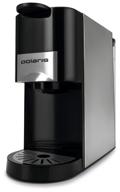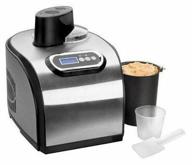🧊 Ice Makers
Choosing the Perfect Ice Maker for Your Specific Needs
When it comes to meeting the ice-making demands of various environments, having the right ice maker is crucial. Whether you own a bustling restaurant, run a small kitchen, entertain outdoors, or require a portable solution, there are several key options to consider. In this article, we will explore the benefits and features of different types of ice makers to help you make an informed decision for your specific needs.
Commercial-Grade Portable Ice Maker with Built-In Water Dispenser
For businesses that require a reliable and efficient ice maker, the commercial-grade portable ice maker with a built-in water dispenser is an excellent choice. These units are designed to produce large quantities of ice quickly, ensuring a constant supply to meet high-demand situations. Equipped with a built-in water dispenser, it eliminates the need for a separate water source, saving both space and time. With their robust construction and durable materials, these ice makers can withstand the rigors of a bustling commercial environment, making them a perfect fit for restaurants, hotels, or catering services.
Stainless Steel Ice Maker with Large Capacity for Restaurants
When it comes to ice makers for restaurants, durability and capacity are paramount. A stainless steel ice maker with a large capacity is an ideal choice to fulfill the demanding needs of a busy restaurant. Constructed with high-quality stainless steel, these ice makers are not only aesthetically pleasing but also resistant to corrosion, ensuring a long-lasting investment. With their generous ice production capacity, they can keep up with the constant demand, providing a steady supply of ice cubes for refreshing beverages and food preservation. Additionally, many models come equipped with advanced features such as adjustable ice thickness settings and self-cleaning capabilities, further enhancing convenience and efficiency.
Energy-Efficient Undercounter Ice Maker for Small Kitchens
In small kitchens where space is limited, an undercounter ice maker offers a space-saving solution without compromising on performance. Opting for an energy-efficient model ensures that the ice maker operates efficiently, reducing energy consumption and lowering utility costs. These compact units are designed to fit seamlessly under countertops, maximizing available space while still providing a significant ice production capacity. With their quiet operation and sleek design, energy-efficient undercounter ice makers are an excellent choice for coffee shops, cafes, or home kitchens where every square inch counts.
Quiet Residential Ice Maker for Outdoor Entertaining Spaces
When it comes to hosting outdoor events or parties, having a quiet residential ice maker can greatly enhance the experience. These ice makers are specifically designed to operate with minimal noise, ensuring that your guests are not disturbed while enjoying the festivities. With their compact and portable design, they can be easily moved to different locations, providing ice wherever it is needed. Whether you're setting up a backyard bar or organizing a picnic in the park, a quiet residential ice maker is a must-have companion for outdoor entertaining spaces.
Choosing the right ice maker for your specific needs is essential to ensure a constant supply of ice and meet the demands of your environment. Whether you require a commercial-grade ice maker, a large-capacity unit for a restaurant, an energy-efficient undercounter model for a small kitchen, or a quiet residential ice maker for outdoor entertaining, there is a perfect solution available to suit your requirements. Consider the features, capacity, and unique benefits of each type before making your decision, and enjoy the convenience and efficiency that a well-suited ice maker brings to your space.


103 Review
The coffee maker is versatile and works with both ground coffee and most types of capsules. You can prepare both single and double servings of the drink. The device has a compact size and will not take up much space in your kitchen. The coffee maker is equipped with a removable water tank with a volume of 0.80 liters, as well as removable nozzles for…
Read more about this product

2 Review
Capacity 1.5 l/h Overall dimensions 320x385x330 mm Power 0.15 kW Voltage 220/50/1 Weight 12.2 kg Number of freezing cylinders 1 Number of tanks 1 Case material stainless steel Cooling type air Type of control system electronic
- A portable ice maker is a standalone unit that can be easily moved and does not require any installation. It is designed for convenience and is suitable for various environments, such as outdoor events or small kitchens. On the other hand, an undercounter ice maker is installed directly into a cabinet or under a counter, offering a built-in and seamless look. It is typically larger in capacity and designed for commercial or residential use where a permanent installation is desired.
- Regular cleaning and maintenance are essential to keep your ice maker in optimal condition. Start by following the manufacturer's instructions for cleaning. This usually involves emptying and disinfecting the ice bin, wiping down the exterior, and cleaning the internal components. It's also important to regularly check and replace filters, if applicable, to ensure the quality of ice. Additionally, keeping the surrounding area clean and free from debris helps maintain the efficiency of the ice maker.
- Using tap water in your ice maker is generally safe, but the quality of the water can affect the taste and clarity of the ice. If your tap water has an off-flavor or contains impurities, it's recommended to use filtered or bottled water instead. Some ice makers also come with built-in water filters to improve the quality of ice. Refer to your ice maker's manual for specific guidelines regarding water usage.
- The time it takes for an ice maker to produce ice varies depending on the model and environmental conditions. Generally, it can take anywhere from 6 to 15 minutes for a batch of ice cubes to be ready. Factors such as the size of the ice cubes, ambient temperature, and water temperature can affect the production time. It's important to refer to the specifications of your ice maker for more accurate information on ice production times.
- There can be several reasons why an ice maker is not producing ice. Common causes include a clogged water supply line, a malfunctioning water inlet valve, a full or malfunctioning ice bin, or an issue with the temperature control mechanism. It's recommended to check these components and ensure they are functioning properly. If troubleshooting steps do not resolve the issue, it may be necessary to consult the manufacturer or a professional technician for further assistance.

